Round The World and other travels
A frequent flyer's collection of trip diaries
This is: Roaming the Rust Belt (2017)
A day in Pittsburgh
Today we had the luxury of having a full day available to get to know Pittsburgh, without having to worry about packing and moving on. In case anyone is in any doubt, the city's name is pronounced PITS-burg. The unusual spelling arises from the fact that it was named by a Scot, General John Forbes, who probably intended the name to be pronounced in a similar fashion to that of the capital of his native land. As we know, however, things don't always turn out as expected! Pittsburgh was once famous for coal and steel - a kind of American version of Sheffield - and its (American) football team is still known as the Steelers. The city now has a population of over 300,000 and in line with the theme of this road trip, we wanted to see what it had to offer and form an impression of how well it appeared to be coping with the decline of heavy industry.
 After a chaotic and rather unsatisfactory
breakfast, which was a considerable let-down in a hotel that
otherwise gave a favourable impression, we were ready to get
underway. First up in our programme was the Duquesne Incline, one of
two 'incline railways' in the city, better known in Europe as
funiculars. Between them, they gave a good illustration of the very
hilly nature of the terrain. Although the Duquesne Incline wasn't
far from the hotel, Bruce reckoned - correctly, as it turned out -
that it would be a difficult walk. We took our rental car to the base
station, but a little put out by the $6 parking fee, drove to the
top station on Mt Washington and adopted the unorthodox approach of
riding the vintage cars downhill and then back up. Although run by a
preservation society, the facility seemed to be well integrated into
the city transit system, one consequence of which was that it cost
the standard flat fare of $2.50 per person per ride. Considering the
very short distance involved, this seemed a bit steep in more ways
than one.
After a chaotic and rather unsatisfactory
breakfast, which was a considerable let-down in a hotel that
otherwise gave a favourable impression, we were ready to get
underway. First up in our programme was the Duquesne Incline, one of
two 'incline railways' in the city, better known in Europe as
funiculars. Between them, they gave a good illustration of the very
hilly nature of the terrain. Although the Duquesne Incline wasn't
far from the hotel, Bruce reckoned - correctly, as it turned out -
that it would be a difficult walk. We took our rental car to the base
station, but a little put out by the $6 parking fee, drove to the
top station on Mt Washington and adopted the unorthodox approach of
riding the vintage cars downhill and then back up. Although run by a
preservation society, the facility seemed to be well integrated into
the city transit system, one consequence of which was that it cost
the standard flat fare of $2.50 per person per ride. Considering the
very short distance involved, this seemed a bit steep in more ways
than one.
![]()
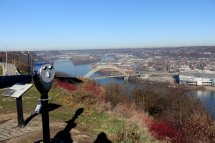 |
 |
 |
 |
 |
 |
 |
 |
 |
The view at the top gave a great introduction to the city, showing the converging Allegheny and Monongahela Rivers, as well as the hills, skyscrapers, still-belching industrial chimneys and a collection of sports stadiums in prominent downtown locations. Somewhat closer at hand was the Point of View bronze sculpture by James A West, depicting a meeting between George Washington and Seneca leader Guyasuta.
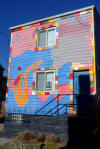 |
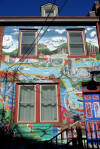 |
LEFT: A brief flavour of the Mexican War Streets |
Rather than returning the car to the parking garage at this stage, we decided to use it to help with the rest of the morning's itinerary. Our main objective was a museum called The Mattress Factory, located in the Mexican War Streets neighbourhood, a historic and 'recovering' district named after the Mexican-American War of 1846-8. We found the area easily enough and had a short preliminary stroll rather than heading straight for the museum. During this, at the Arch St-Jacksonia St corner, we encountered Randyland, a vibrant and colourful creation by folk artist Randy Gilson. In fact it was Randy himself who started talking to us as we were walking by, and invited us in. Randy's own folk art was heavily featured, alongside an eclectic collection of ephemera from popular culture.
| BELOW: A taste of the unusual and the completely wacky at Randyland | |||
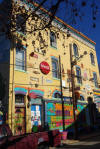 |
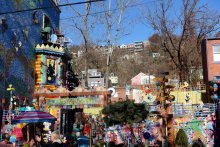 |
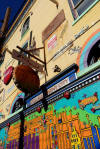 |
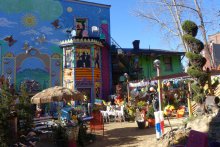 |
The Mattress Factory was a serious modern art museum, positioned very much at the avant-garde end of the spectrum. I found some of the pieces baffling, but enjoyed my visit just the same.
 |
 |
 |
 |
 |
 |
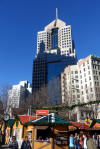 |
 |
 |
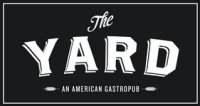 After returning the car to the public parking garage, we strolled the city
streets to the nearby Christmas market. This was fairly uninspiring
compared to most European equivalents, but we did manage to find a
buzzing venue called The Yard ("An American Gastropub"), where we
kept the continental comparisons going by each enjoying a
sausage-based lunch. Going by the clientele, I was left with the
impression that in Pittsburgh, the idea of the office team lunch is
not yet dead, and I daresay the city is a better place for that.
After returning the car to the public parking garage, we strolled the city
streets to the nearby Christmas market. This was fairly uninspiring
compared to most European equivalents, but we did manage to find a
buzzing venue called The Yard ("An American Gastropub"), where we
kept the continental comparisons going by each enjoying a
sausage-based lunch. Going by the clientele, I was left with the
impression that in Pittsburgh, the idea of the office team lunch is
not yet dead, and I daresay the city is a better place for that.
Duly satisfied, we walked to Point State Park, at the confluence of the Allegheny and Monongahela Rivers, in glorious sunshine and mild temperatures that were exactly as forecast. The location reminded me of the Deutsches Eck in Koblenz, where the Mosel flows into the Rhine. The skyline was a tad different, though!
 |
 |
 |
 |
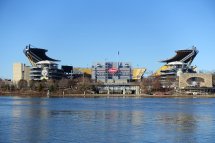 |
 |
 |
 |
 |
We continued to the three near-identical bridges known as The Three Sisters and used the central one to cross the Allegheny. It was painted in a richer, mustard-like colour compared to its cream-coloured siblings. The central bridge, like the street itself, was dedicated to the modern artist Andy Warhol, and appropriately enough, both led to The Andy Warhol Museum, the largest museum in the United States dedicated to a single artist. Andy Warhol was born in Pittsburgh in 1928, to Slovakian parents. He developed into a leading exponent of 'pop art', aiming to avoid perceived elitism by including imagery from popular culture.
 |
 |
 |
 |
 |
 |
As we toured the museum, it was interesting to observe Warhol's obsession with branding, in which regard a special place of honour seemed to be reserved for Campbell's soup - a bit cheeky in the hometown of the Heinz corporation! Other notable obsessions in his work included nose-picking - yes, you read that correctly. All in all, this was a most enjoyable and informative visit to this fitting tribute to a local hero and first-generation American.
 |
 |
 |
 |
 |
 |
 |
 |
 |
 |
 |
 |
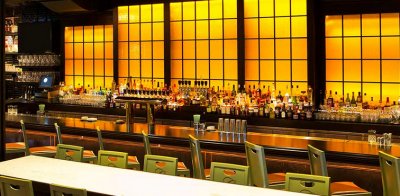
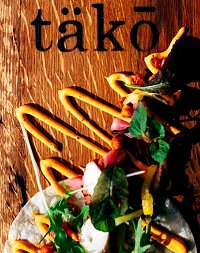 We
walked back to the hotel, pondering again how strange it was that
the Andy Warhol bridge appeared to be the quietest in town, by some
way. In due course, we started our evening with drinks at The
Commoner, a very classy restaurant with an impressive bar, at the
nearby Monaco Hotel by Kimpton. The name refers to William
Pitt the Elder ("The Great Commoner"), the British prime minister
for whom General Forbes named this city. From there, we moved on to
täkō, a popular Mexican restaurant where some of
the fare, to use the business's own advertising words, was "of an
Asian persuasion". The combination of venues made for an excellent
way to bring down the curtain on a thoroughly enjoyable visit to the
Steel City.
We
walked back to the hotel, pondering again how strange it was that
the Andy Warhol bridge appeared to be the quietest in town, by some
way. In due course, we started our evening with drinks at The
Commoner, a very classy restaurant with an impressive bar, at the
nearby Monaco Hotel by Kimpton. The name refers to William
Pitt the Elder ("The Great Commoner"), the British prime minister
for whom General Forbes named this city. From there, we moved on to
täkō, a popular Mexican restaurant where some of
the fare, to use the business's own advertising words, was "of an
Asian persuasion". The combination of venues made for an excellent
way to bring down the curtain on a thoroughly enjoyable visit to the
Steel City.